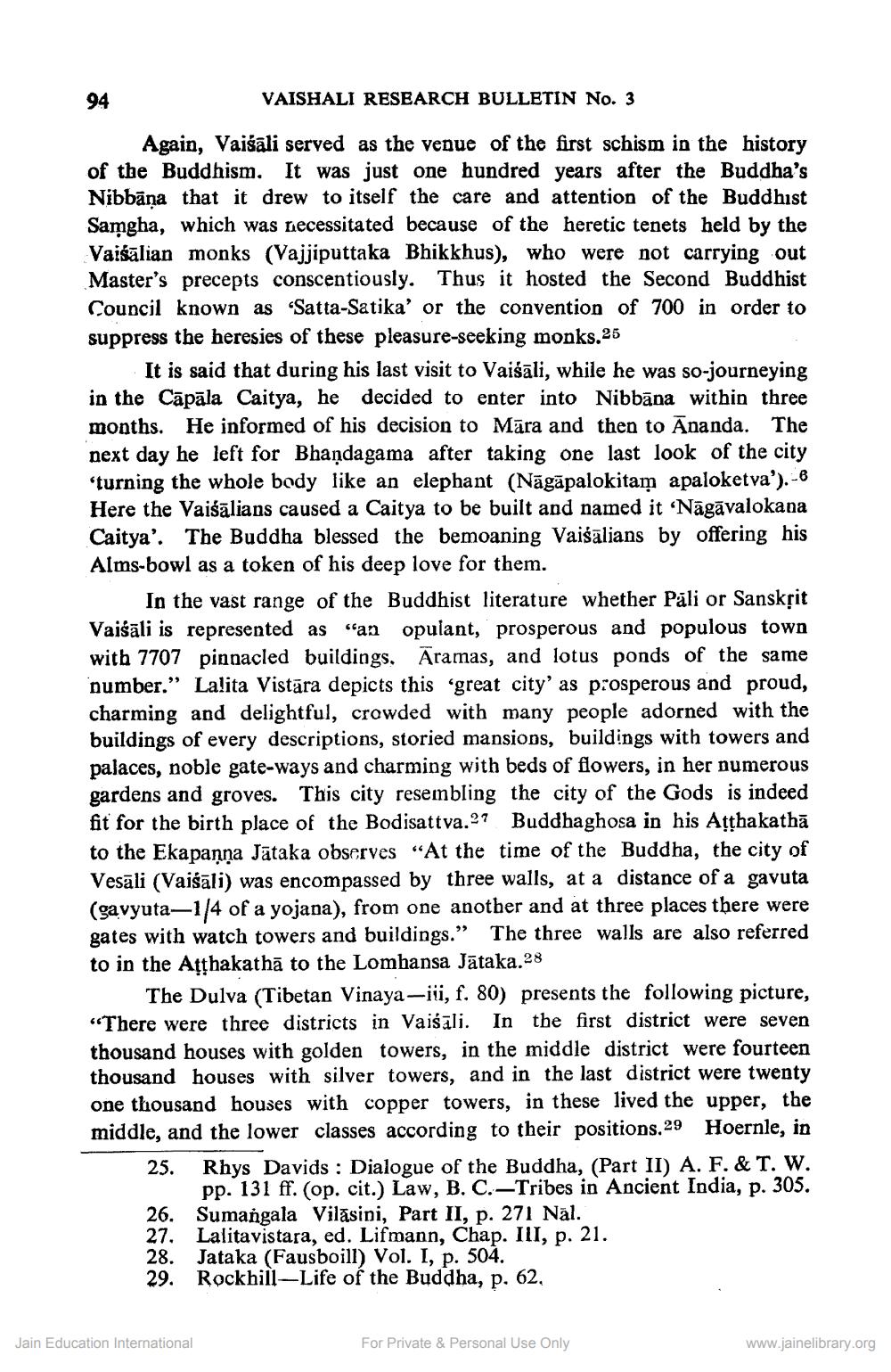________________
94
VAISHALI RESEARCH BULLETIN No. 3
Again, Vaišali served as the venue of the first schism in the history of the Buddhism. It was just one hundred years after the Buddha's Nibbāṇa that it drew to itself the care and attention of the Buddhist Samgha, which was necessitated because of the heretic tenets held by the Vaišālian monks (Vajjiputtaka Bhikkhus), who were not carrying out Master's precepts conscentiously. Thus it hosted the Second Buddhist Council known as 'Satta-Satika' or the convention of 700 in order to suppress the heresies of these pleasure-seeking monks.25
It is said that during his last visit to Vaiśāli, while he was so-journeying in the Capāla Caitya, he decided to enter into Nibbana within three months. He informed of his decision to Mara and then to Ananda. The next day he left for Bhandagama after taking one last look of the city "turning the whole body like an elephant (Nāgāpalokitam apaloketva'). -6 Here the Vaiśalians caused a Caitya to be built and named it 'Nāgāvalokana Caitya'. The Buddha blessed the bemoaning Vaišalians by offering his Alms-bowl as a token of his deep love for them.
In the vast range of the Buddhist literature whether Pali or Sanskrit Vaiśāli is represented as "an opulant, prosperous and populous town with 7707 pinnacled buildings, Āramas, and lotus ponds of the same number." Lalita Vistara depicts this 'great city' as prosperous and proud, charming and delightful, crowded with many people adorned with the buildings of every descriptions, storied mansions, buildings with towers and palaces, noble gate-ways and charming with beds of flowers, in her numerous gardens and groves. This city resembling the city of the Gods is indeed fit for the birth place of the Bodisattva.27 Buddhaghosa in his Aṭṭhakathā to the Ekapanna Jataka observes "At the time of the Buddha, the city of Vesāli (Vaiśāli) was encompassed by three walls, at a distance of a gavuta (gavyuta-1/4 of a yojana), from one another and at three places there were gates with watch towers and buildings." The three walls are also referred to in the Atthakatha to the Lomhansa Jātaka.28
The Dulva (Tibetan Vinaya-iii, f. 80) presents the following picture, "There were three districts in Vaisali. In the first district were seven thousand houses with golden towers, in the middle district were fourteen thousand houses with silver towers, and in the last district were twenty one thousand houses with copper towers, in these lived the upper, the middle, and the lower classes according to their positions.29 Hoernle, in
25.
Rhys Davids: Dialogue of the Buddha, (Part II) A. F. & T. W. pp. 131 ff. (op. cit.) Law, B. C.-Tribes in Ancient India, p. 305. 26. Sumangala Vilasini, Part II, p. 271 Nal.
27. Lalitavistara, ed. Lifmann, Chap. III, p. 21. 28. Jataka (Fausboill) Vol. I, p. 504. Rockhill-Life of the Buddha, p. 62.
29.
Jain Education International
For Private & Personal Use Only
www.jainelibrary.org




